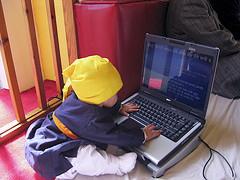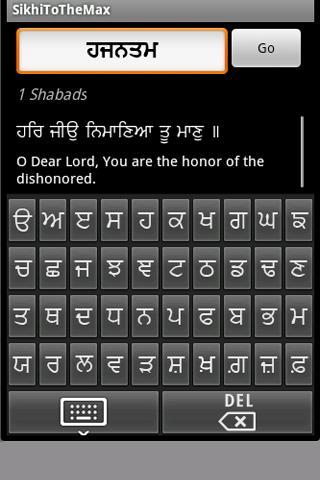
The parishioners at Our Lady of Good Counsel in Plymouth are rarely far from the word of God — or each other.
Besides a website that links to a blog and podcasts, the Catholic church has a YouTube channel, a Facebook page as well as Twitter and Instagram accounts. It even has its own newly developed smartphone app that shares homilies and bulletins.
“We’re really at the forefront of this push for the new evangelization,” said the Rev. Steve Mateja, associate pastor. “We really have to reach everyone where they’re at. … We know technology is one of the great ways.”
From scrolling through sacred texts on hand-held tablets during services to heading online for spiritually centered classes, members of religious communities across Metro Detroit are taking advantage of the latest technology to enhance worship, learn about their faith and conveniently observe centuries-old traditions. For the thousands turning to devices and electronic connections, the thrust is less about gaining digital dexterity than capitalizing on a divine development.
For the thousands turning to devices and electronic connections, the thrust is less about gaining digital dexterity than capitalizing on a divine development.
“Digital gadgets and digital experiences are built into the everyday rhythms of people’s life, and the spiritual domain is not an exception to this,” said Lee Rainie, director of the Pew Research Center’s Internet & American Life Project, which tracks the social impact of technology usage. “Places of spiritual worship now use these tools to do things that have always interested them, but they now have new ways to show and participate in that interest.”
Venues allowing worshippers to indulge that interest include the Bible App by YouVersion.
Keep up with the message
Attendees of Sunday services at the nondenominational Life Bridge Church in Taylor, which has noted substantial growth attributed to its online presence, are encouraged to bring their phones and use the app to follow along with Scriptures read, Internet pastor Bill Rice said. “Unlike a lot of churches, we encourage you to turn on your cellphones.”
From her seat, member Lynsi Hoyt regularly calls up the Bible app on her purple-covered iPhone. “People use their phones for everything — you could use your phone to navigate your spiritual life, as well,” the mother of three from Flat Rock said. “I feel like I can keep up with the message and what’s being taught much better. … It actually helps me stay on task more.”
California-based IslamiCity.com is hoping to share the teachings of the Quran by offering an iPod loaded with readings from the Muslim holy text. The idea is to help adherents follow prayers and recite portions while traveling during holy periods, CEO Mohammed Aleem said. “People are able to actually use these technologies to make sure they perform their religious obligations in a much easier way.”
The site also is developing an iBook to learn the Arabic alphabet, which is expected to aid Muslims as well as others, Aleem said. “They’ll learn it much faster.”
In the Sikh community, followers often take advantage of apps such as Gurbani Anywhere, which can translate prayers into English. “It is very useful and innovative,” said Kabeer Singh, 18, a college student from West Bloomfield Township. Sikhs also are aided during services at their worship sites, known as gurdwaras, with SikhiTotheMAX, a software that projects onto screens translations and transliterations of the Guru Granth Sahib sacred text.
Sikhs also are aided during services at their worship sites, known as gurdwaras, with SikhiTotheMAX, a software that projects onto screens translations and transliterations of the Guru Granth Sahib sacred text.
For youths and others needing help, “apps and software definitely are playing a huge role in the learning/understanding of scriptures for Sikhs,” said Jasvir Singh, who is active with the Sikh Society of Michigan.
The Michigan Conference of the United Church of Christ has also noted an uptick in technological use — including social media during services, said Campbell Lovett, its conference minister. “It’s definitely becoming more acceptable. ... Maybe cellphones and tablets and some of the new media are this generation’s new stained glass: ways we tell a story.”
Some experts consider the trend another way for religious communities to remain as modern as their devotees.
“Today, churches and religions are challenged to find the appropriate metaphors to maximize the new opportunities that media presents and come to terms with a fundamental shift in reading practices that digitality has brought about,” said Daniel Ramirez, an assistant professor of North American religious history at the University of Michigan.
Students' comfort level
That’s why leaders at Temple Israel in West Bloomfield opted to link fourth-graders in its Hebrew school with an online program through ShalomLearning, an education services company. Besides one day a week of classroom instruction, students can learn language basics on a tablet, iPad or other device in their own time, said Rabbi Arianna Gordon, the synagogue’s director of education and lifelong learning.
“That’s where their comfort level is,” she said. “It’s how they’re learning … and it’s how they’re being trained to learn.”
Molly Weisberg, 9, of Milford, said she enjoys mastering “shin” and other Hebrew letters as quickly as possible. “I think it’s good because now I don’t have to rush through things … I can just do it at my own speed.”
The convenience of online education inspired Chris Yaw of St. David’s Episcopal Church in Southfield to form a team that developed churchnext.tv. The website, which debuted in August, allows individuals and congregations to take more than 30 Christian-centered courses — including “How to Take a Sabbath” and “The Presbyterian Tradition” — by themselves or in groups.
More than 200 congregations have enrolled so far, Yaw said. “I think this is just where the church is going,” he said.
[email protected]
